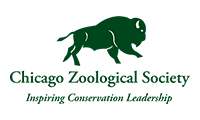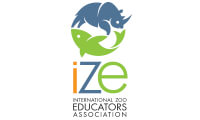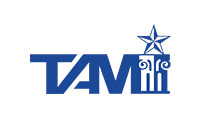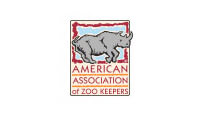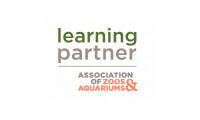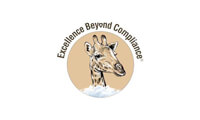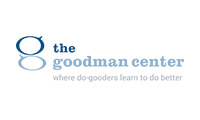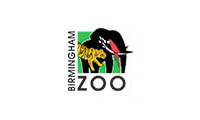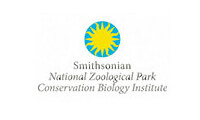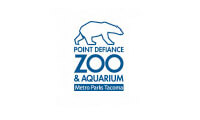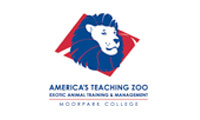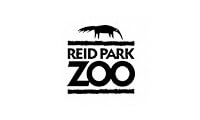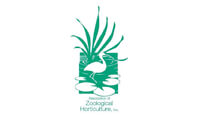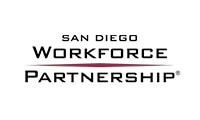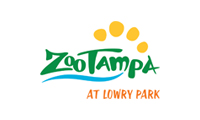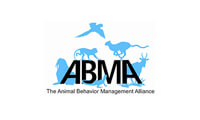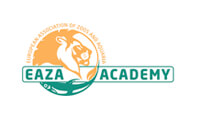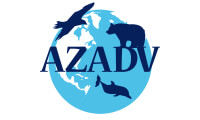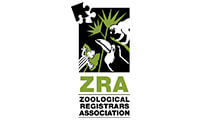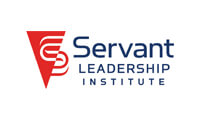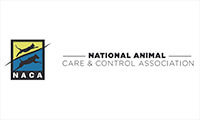Getting Better All the Time
USDA Names New Animal Care Leader
By James F. Gesualdi
I cannot say whether things will get better if we change; what I can say is they must change if
they are to get better.
—Georg C. Lichtenberg
The secret of change is to focus all of your energy not on fighting the old, but on building the
new.
—Dan Millman, Way of the Peaceful Warrior
Welcome and Congratulations to Sarah J. Helming, Charged with Turning the Page at Animal Care
On August 26, U.S. Department of Agriculture (USDA) Animal and Plant Health Inspection Service (APHIS) Administrator Dr. Michael Watson appointed Sarah J. Helming, an attorney and an experienced leader within APHIS, to serve as deputy administrator for animal care. In a message to stakeholders, Dr. Watson noted:
Sarah previously served as the APHIS deputy administrator for Emergency and Regulatory Compliance Services (ERCS), where she led the unit’s Investigative and Enforcement Services (IES) and Emergency Management, Safety, and Security staffs, and understands well the value of enforcement and importance of security. In this role, Sarah implemented significant reforms, initiating an evaluation and assessment of current, longstanding IES processes and procedures, changes that have already realized major efficiencies and improvements. Sarah’s ability to build coalitions across all of government and effectively engage with stakeholders will also greatly benefit AC [Animal Care]. From April to July this year, she was asked to co-lead the U.S. Department of Agriculture’s and Health and Human Services’ response to the detection of highly pathogenic avian influenza in cattle, standing up a unified coordinating group, identifying needed working groups across all government sectors to achieve a shared vision to managing this One Health event.
Sarah Helming’s official agency bio can be read here.
APHIS Administrator Reaches Out, Opens the Door with Appointment
Dr. Watson used the announcement of Helming’s appointment to note the Animal Welfare Act’s (AWA) important mission, the dedicated efforts of Animal Care staff, and the need to “continue to partner and collaborate with our many stakeholders who share our commitment to caring for animals.” Dr. Watson also extended the following invitation: “I hope that you will join me in welcoming Sarah in her new role and take this opportunity to reach out to her to share your perspectives, concerns, and opportunities to renew our collaboration.”
Reaching Out to the New Deputy Administrator
Dr. Watson’s invitation to welcome Helming (see above) and “take the opportunity to … share your perspectives, concerns, and opportunities to renew our collaboration” (see below) is greatly appreciated.
Here are some perspectives, concerns, and opportunities worth noting and/or considering.
- Like the zoological world and other stakeholder groups, the agency is comprised of many good people dedicated to protecting animals and improving their lives.
- Agency guidance materials on numerous species and subjects are very helpful. The Animal Welfare Inspection Guide is invaluable.
- Transparency of inspection reports and enforcement records helps us get better and enhances our understanding of the application of the AWA regulations, as well as problems to avoid and good practices to employ.
- Good faith actions to do more than simply fix issues, but also to make things better, should be recognized and encouraged. Examples include self-certified compliance reporting following an inspection report identifying noncompliant items, as this practice promotes prompt and more comprehensive action. Likewise, the use of improvement plans with respect to self-certified compliance reporting or challenging situations could help drive greater advances in animal well-being. These plans also provide for more accountability and transparency.
- As written in these columns previously, take some of the good, innovative ideas incorporated into the recent bird regulation (such as measures for addressing animals with special needs, and much more; see March 2023 and April 2023 columns) Also, look at the not-so-recent marine mammal negotiated rulemaking-generated regulations (such as transport plans and separation plans) and extend similar protections to all covered species in new, modernizing regulations. In the interim, release guidance and encourage it as good practice in furtherance of existing regulations, like the general handling regulation (9 C.F.R. § 2.131).
- Build upon the recent advance notice of proposed rulemaking on environmental enrichment and go even further in rulemaking and guidance to make the AWA provide for covered animals to live and thrive as they were meant to. Here, the work of Greg Vicino and his team at San Diego Zoo Wildlife Alliance, as well as others elsewhere, has shown the way in terms of advocating enriching experiences that develop animals’ innate agency and potential to direct and improve their own lives. (See April 2023 column, link above.)
- The agency receives, reviews, and, as appropriate, acts on complaints each year. Some of these are generated via a dedicated page on the agency website. Complaints and concerns can be extremely useful in highlighting actual as well as perceived problems. A short, generalized annual summary of the nature of complaints, improvements and resolutions, and suggested good practices could be a good resource for those committed to continuous improvement.
- Given extensive time spent reviewing inspection reports, facilities-related issues remain among the most common, often serious, and largely preventable noncompliant items. Perhaps an inspector-led Center for Animal Welfare program on facilities challenges, good practices, preventative maintenance, and improvement plans could be a big help for animals. Collaboration from regulated communities, manufacturers, suppliers, and contractors/installers could contribute to the program’s beneficial impact.
- Explore a broad-based stakeholder advisory group to meet quarterly to share “perspectives, concerns, and opportunities” directed toward annual or periodic reports recommending agency improvements.
Thank you, Dr. Watson, for Helming’s appointment and using it as a moment in the agency’s continual evolution to warmly welcome her and share a few thoughts for the road ahead. The unique launch is encouraging, which is good, given the important difference the AWA can make in animals’ lives.
Consider sharing your own welcome, ideas, and offers to serve as resources via the agency’s general email address: animalcare@usda.gov
More Guidance on Birds from the Agency Website FAQ
Two additional items among the agency guidance on the bird regulations come in the form of the responses to questions:
How will free-roaming ground fowl be impacted by the bird rule at exhibitors?
Exhibited poultry such as peafowl, guineas, and chickens that are owned by the facility and allowed to roam freely with the public and in exhibit areas with other exotic or wild animals are covered under the bird rule. The regulations allow these types of birds to roam freely on the facility’s property; however, birds that are flight-restricted or cannot fly (which most of these species are) that are allowed to roam free within the grounds must have access to safety pens, enclosures, or other areas that offer the birds protection overnight and all other times when their activities are not monitored. It’s important to remember that these birds must stay on the facility’s property. The facility must also ensure these birds’ safety from predators and the public and provide adequate veterinary care. Please note, wild birds not owned or managed by the facility should not be included on the inventory; however, the facility should be assessing and minimizing negative welfare impacts on covered species.
When is identification required for birds and in what form?
At the time birds are delivered for transportation or otherwise acquired or disposed of, birds must be identified by one of the following methods:
- Label (attached to the primary enclosure with the number of birds, species, distinctive physical features and identifying marks), or
- Leg or wing band applied to each bird, or
- Microchip
Upcoming Avian Symposium
The USDA APHIS Center for Animal Welfare is holding a virtual Avian Enrichment Welfare Symposium November 19–20, 2024. Presentations will cover topics including avian intelligence; types of enrichment for specific groups; how to develop, implement, and assess enrichment plans; reviewing the USDA inspection process at avian facilities; and veterinary aspects of avian enrichment. Register here for this event.
Change Is an Inside-Out Thing
My recent article, “Practicing Animal Law from the Inside Out,” published by the American Bar Association, is a road map for positive change (even for non-lawyers).
Going all out for animals starts from the “Inside Out”
The surest path to change is from within. It applies or is available to each of us,
including those outside of ourselves and our groups, organizations, communities,
and networks that we seek to influence. As animal lawyers, thoughtful inside-out
practice can help us to create meaningful change that is good, lasting, and
sustainable.
For a copy, please email the Academy or me, at jfges@aol.com.
Still Grateful After All These Years
This column will be published in advance of the Thanksgiving holiday in the U.S. (and after Canadian Thanksgiving). For those in a grateful frame of mind, here are my prior Thanksgiving messages, viewable in the San Diego Zoo Wildlife Alliance Academy newsletter archives.
- “Turning Challenges into Opportunities: The Principles of Constructive Engagement,” November 2015. (Leveraging gratitude for the opportunity and ability to help animals to carry us through difficult challenges.)
- For an updated, streamlined version of the Principles of Constructive Engagement, see the January 2023 column “Learning from Life Itself Helps Us Positively Impact Animals’ Lives.”
- “Giving of Ourselves, Planning Thoughtfully, and Thanksgiving for Caregiving,” November 2016.
- “Improving Animals’ Lives Every Day,” November 2017.
- “Serving Gratefully Is the Highest Form of Giving Thanks,” November 2018.
- “Supporting the Cause of Animal Protection: Words from the Heart,” November 2019.
- “The Practice of Giving Thanks and How Mentoring Helps Us Help Animals,” November 2020.
- “Giving Thanks for Doing Work that Makes Our Lives ‘Good for Something’,” November 2021.
- “Thinking About Thanksgiving in a Heartfelt New Way,” November 2022.
- “A Season of Giving—and for Giving Thanks: Take Time, Count Your Blessings, and Be Ever Thankful,” December 2023
An Earnest Reflection on the Truly Good Practice of Thanksgiving (listen here)
Let us be ever thankful
for this very moment and each one in which we live.
May boundless gratitude always fill our hearts—
especially at those times we strain to see the good.
The good that is all around us, within us, and sustains us.
Our practice of thanksgiving is only ever now and more than a day.
From this lofty consciousness, we can seize the opportunities to bring greater good
and more light to our journey, together with the animals and each other.
As we move forward, let us seek to more fully understand the animals, people, and world outside
of ourselves, although connected to the essence of our being.
It is through such awareness and appreciation of our differences that we see anew the oneness of
all life.
This knowledge strengthens our resolve to gratefully serve animals and others.
And that is our reason for being here, and it is good.
© 2021 James F. Gesualdi, P.C.
Rolling with the Changes Starts Here
Excellence Beyond Compliance® and “Getting Better All the Time” are all about change for the better. Continuous improvement in ourselves and in advancing animal interests, protection, and well-being is all about change for the better.
Changes in the AWA regulations, administration, enforcement, and agency leadership, as well as other external factors, challenge us to be better, which is at the very heart of our daily good practices. With change, things will be different—whatever that may mean and wherever that may lead.
With humility, we can welcome Helming’s leadership and the changes it may bring, and do our part—even when we may respectfully differ—to do what we are called to do and put all our hearts into making a positive difference for animals, especially (but not only) those we care for daily that are covered by the AWA.
Open your arms to change, but don’t let go of your values.
–His Holiness the 14th Dalai Lama
One cannot manage change. One can only be ahead of it.
–Peter Drucker
© 2024 James F. Gesualdi, P.C., and Terran McGinnis. The opinions expressed herein are solely those of the authors. This is not, nor should it be construed as, legal advice.

